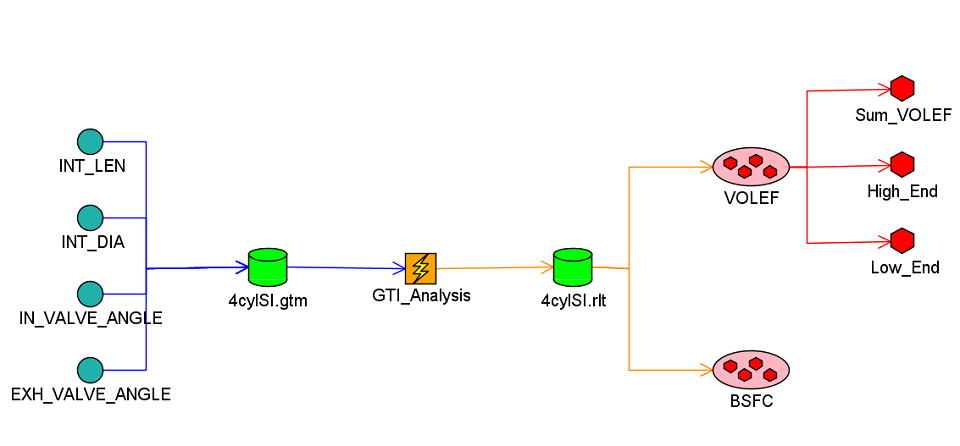Pumping up volumetric efficiency
A free application note that explains how Optimus is used with GT-Power for multi-objective engine performance optimization
Spark ignition engines are analyzed with advanced 1D engine & gas dynamics simulation software to predict and improve performance before a prototype is built. This application note shows how Optimus and GT-Power are used to optimize intake and exhaust manifold geometry and valve timing, to deliver maximized engine performance.
Simulation facts
Engine & gas dynamics simulation software calculates engine performance based on input data provided by engineers. Unfortunately, this approach can only be used to validate designs. If the objective is to maximize engine performance, Optimus is needed to explore the entire design space, to provide deeper engineering insights and to identify designs that meet or even exceed design specifications.

Solution approach
The engine performance simulation workflow is captured using the Optimus graphical user interface. This workflow includes the GT-Power software, as well as the related input and output files. Starting from this engineering workflow, Design of Experiment techniques generate a sufficient amount of data points to identify valve lift parameters as the most influential parameters on both high-end and low-end volumetric efficiency. The data points are then used to fit a response surface model or surrogate model that serves to run a multi-objective optimization. Optimus offers various post-processing tools to examine the Pareto points delivered by this optimization process.

TO FIND OUT MORE, DOWNLOAD YOUR COPY!
Download your copy »©2025 Noesis Solutions • Use of this website is subject to our legal disclaimer
Cookie policy • Cookie Settings • Privacy Notice • Design & Development by Zenjoy